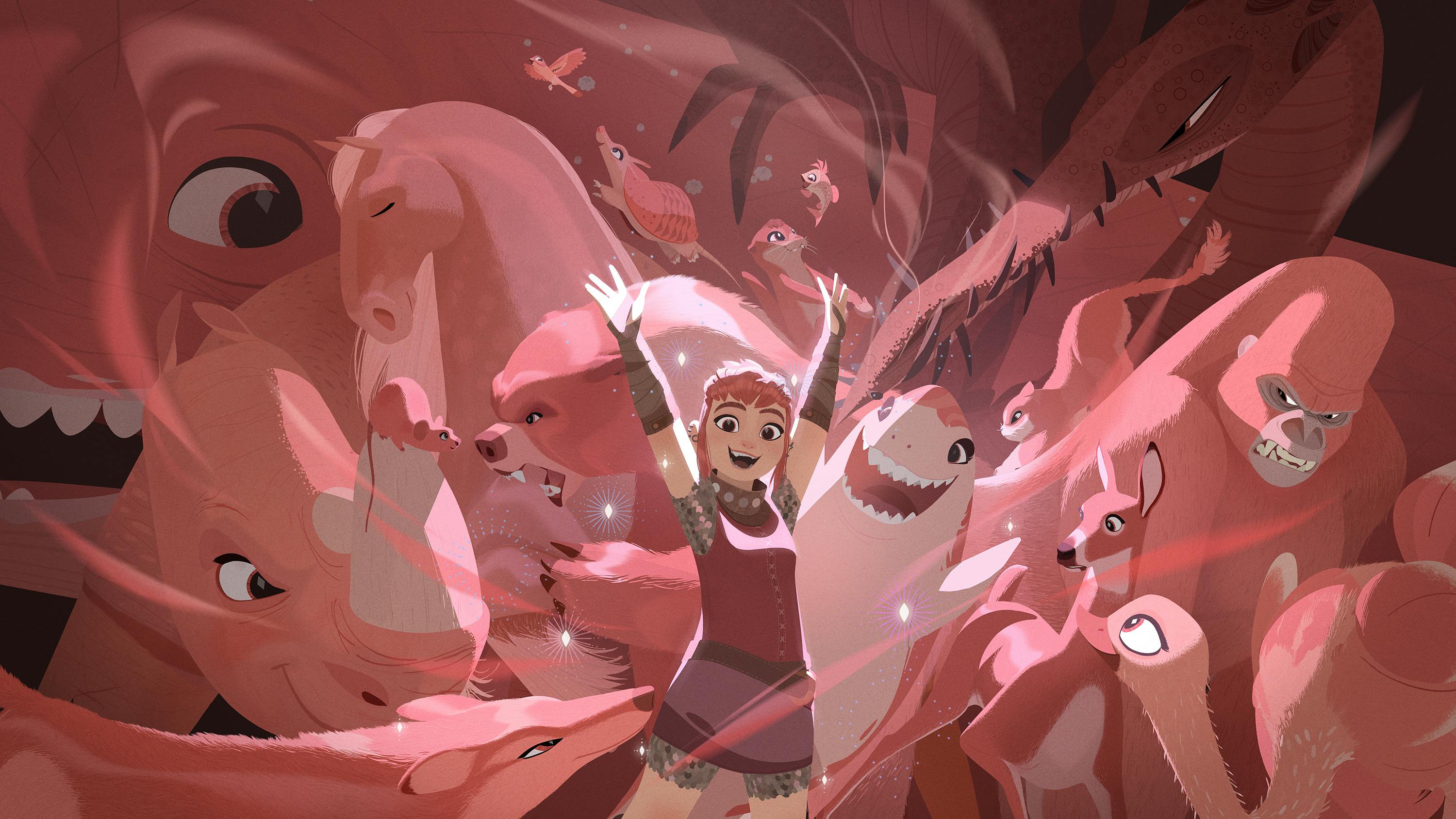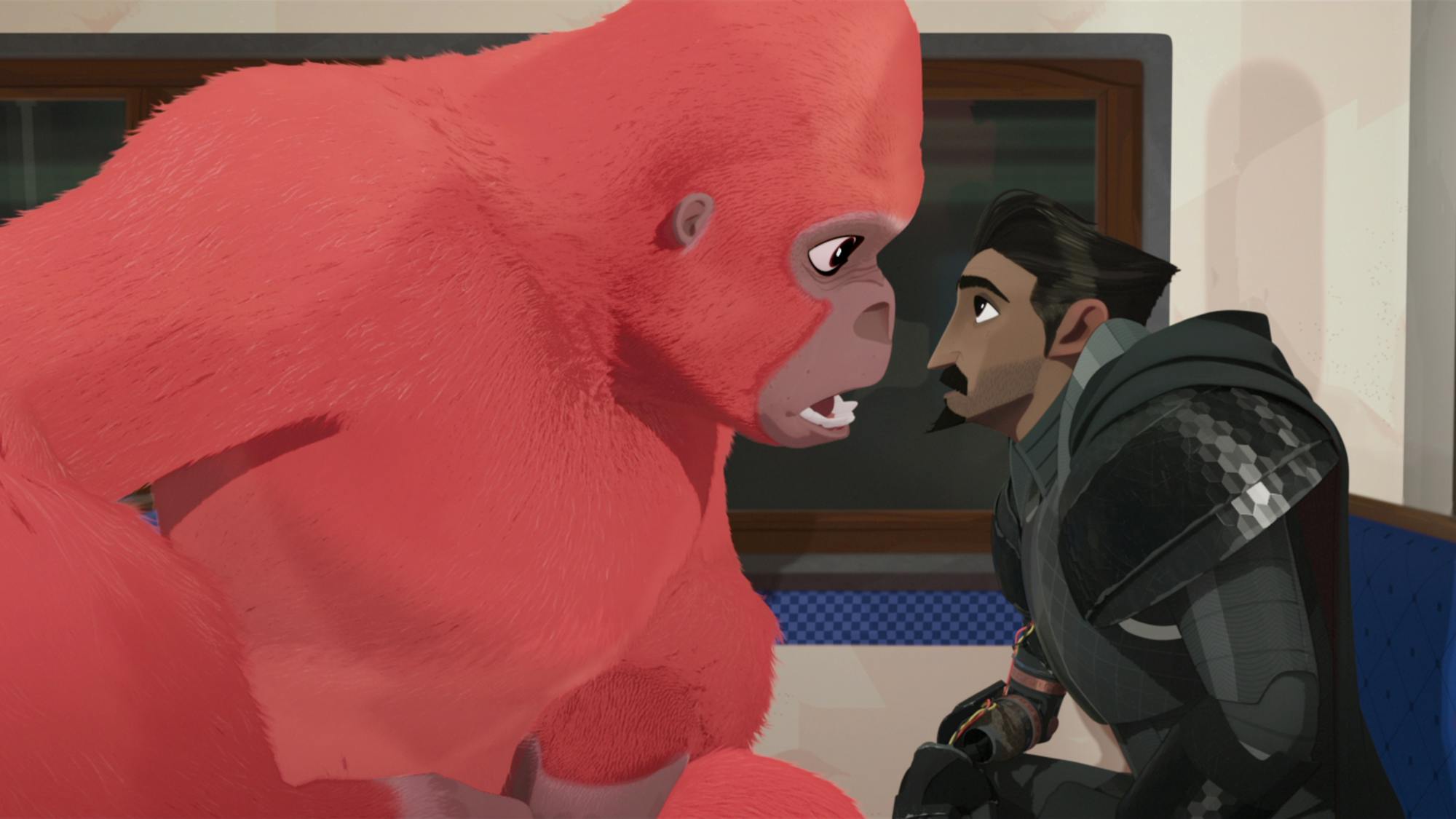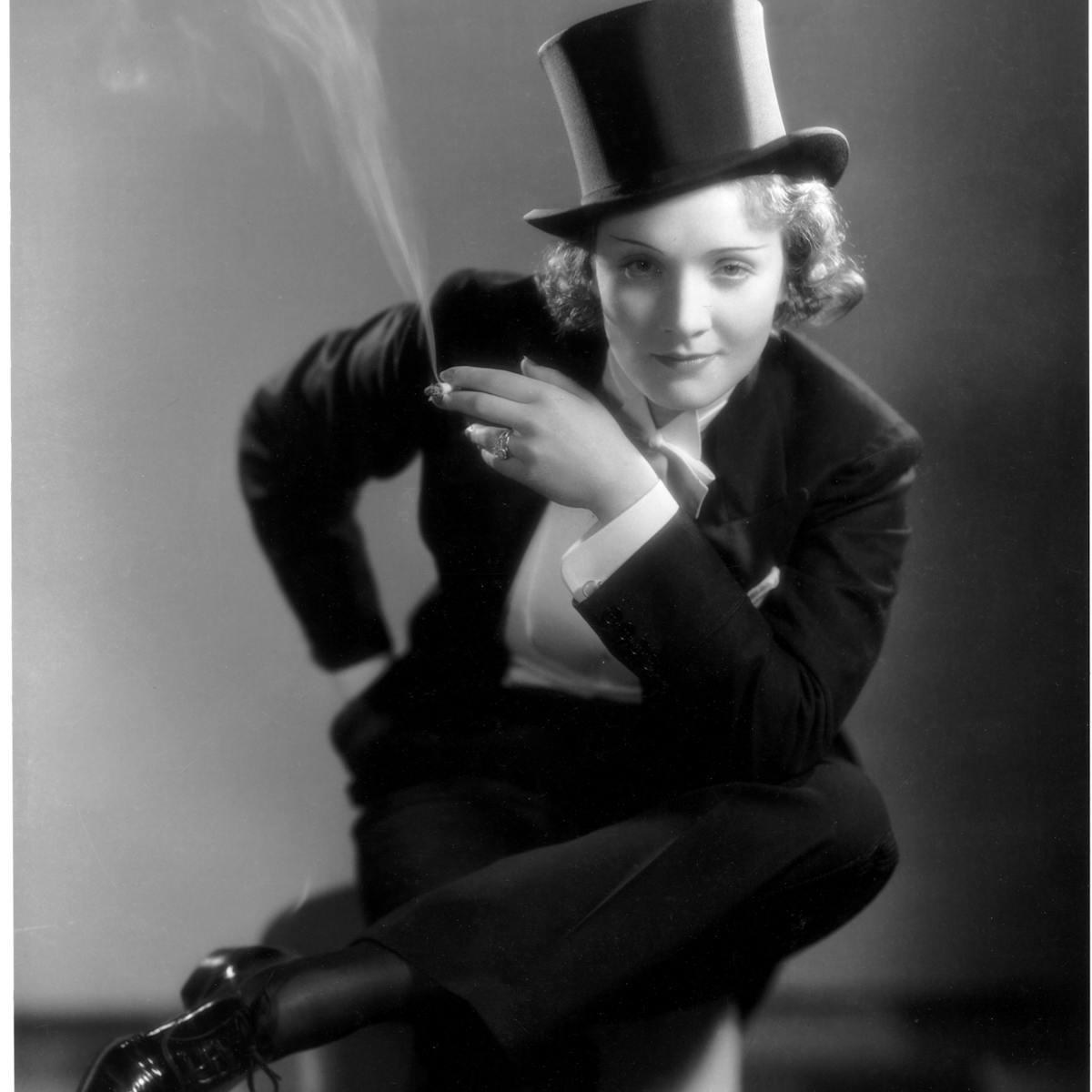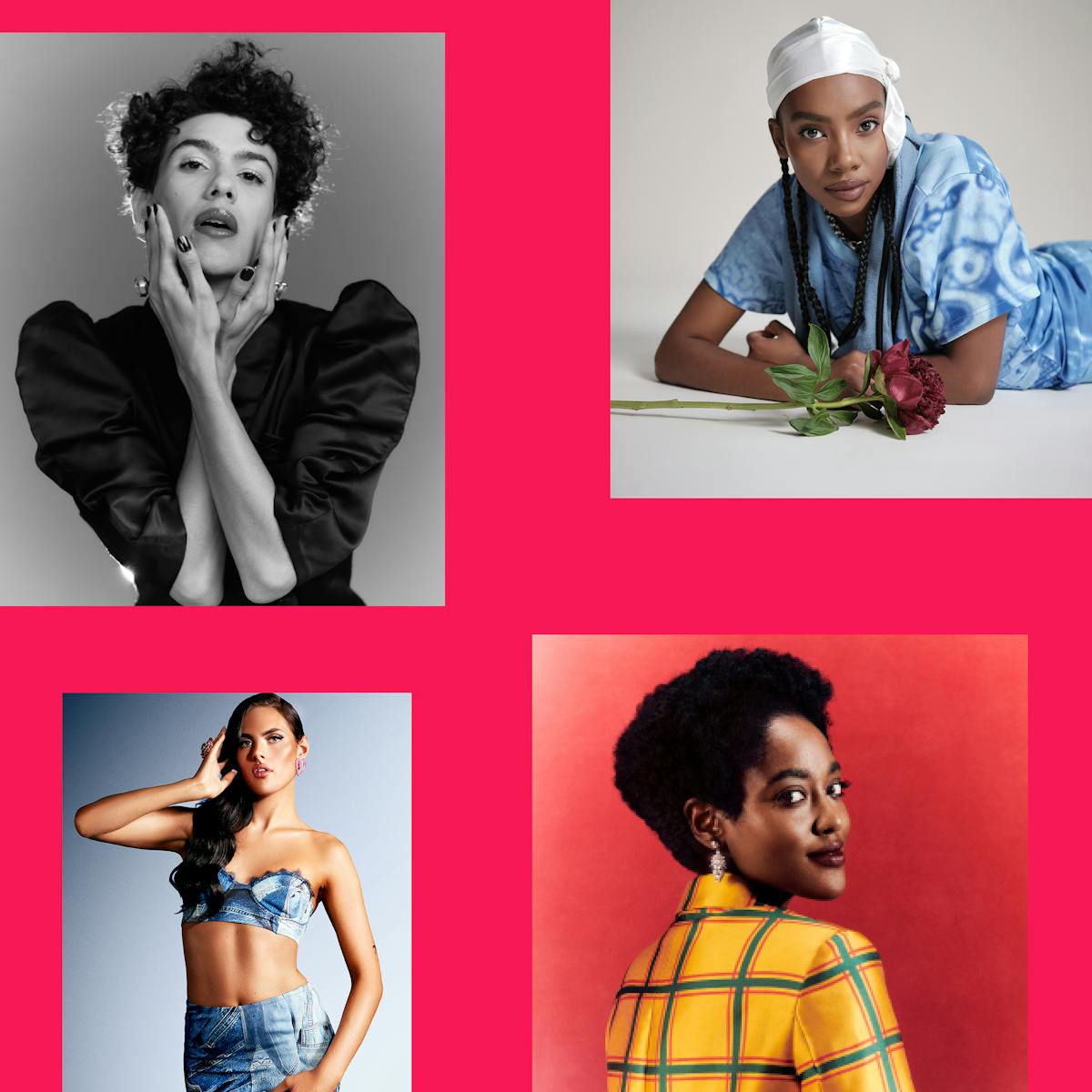Nimona shapeshifts her way into everyone’s heart.
Every transgender person has that one moment when they come across a childhood photograph or diary entry and laugh about how they didn’t see the signs sooner. For me, it was finding photos of myself wearing princess dresses and being reminded of answering the now-obsolete home phone with, “This is she.” For ND Stevenson, creator of Nimona — the acclaimed science-fantasy- graphic-novel-turned-anarchic-yet-emotional Netflix animated feature — it was when he began contemplating his obsession with shapeshifters and unpacking the reasons why they resonated so deeply with his soul.
It was Stevenson’s fascination with characters who could adopt other forms that initially inspired the spirited, pink-haired Nimona, a centuries-old shapeshifter who has the ability to morph at will into all manner of creatures. Stevenson began publishing Nimona’s adventures as a webcomic in 2012 while still in his junior year at the Maryland Institute College of Art. The stories won widespread acclaim, leading to a deal with HarperCollins, which released Nimona as a Y.A. graphic novel in 2015. The inventive tale, which sees the unruly protagonist seek out disgraced knight Ballister Blackheart in the hopes of bringing down the bigoted “Institution” that governs their world, quickly made its way onto the New York Times bestseller list and earned Stevenson a National Book Award nomination when he was just 23 years old.
Looking back now, the Columbia, South Carolina native can see that in dreaming up Nimona, he “was in the process of leaving behind the upbringing that I had that was very religious and very evangelical and very conservative,” Stevenson says. Although he might not have been aware of it then, writing the character allowed him to contemplate profound questions about the nature of his own identity, “about not having the limitations of your own body that everyone else has,” Stevenson says. “Who would you be if you didn’t have any of those limitations, if you could really choose to be anything at any given moment? Nimona gave me a new way of looking at my own gender.”
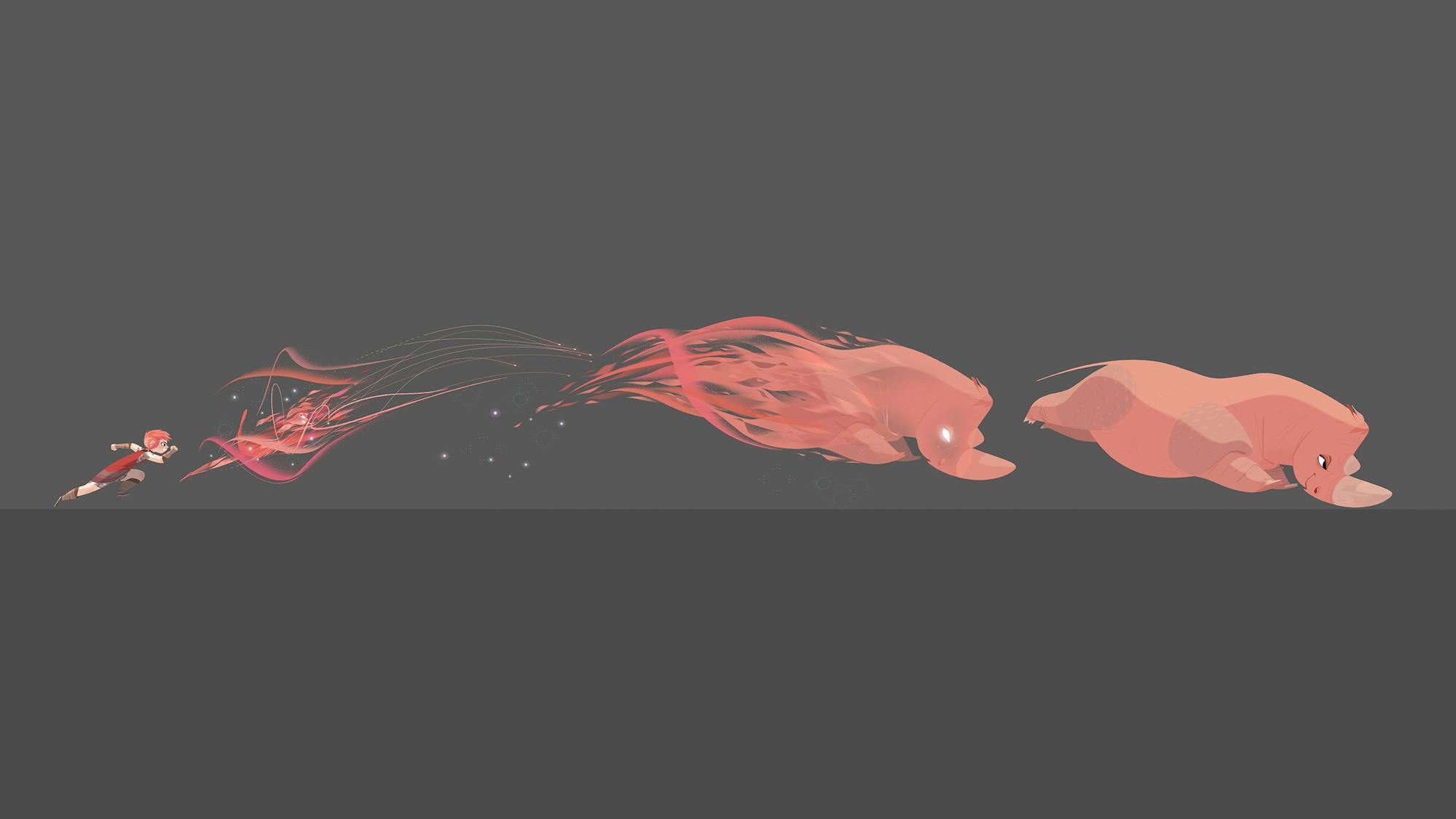
Nimona (Chloë Grace Moretz)
Early shape-shifting exploration art by Aidan Sugano
With its deeply pertinent themes about acceptance, perseverance, and friendship, Nimona appeared ripe for a big-screen adaptation, and in 2015, 20th Century Fox’s Blue Sky Studios acquired the graphic novel with plans for a feature film. After Blue Sky was shuttered in 2019, the project found its way to Netflix. All the while, the filmmakers, including directors Nick Bruno (The Peanuts Movie, Spies in Disguise) and Troy Quane (Spies in Disguise), were committed to seeing the film through and executing Stevenson’s vision onscreen.
Executive producer and co-screenwriter Robert L. Baird, an animation veteran whose credits include Big Hero 6 and Monsters University, loved the adventure not only because, as he says, “there’s a surprise at every turn,” but also because “Nimona is an incredibly unique character and this very untraditional antihero . . . [The story really explores] what you can get out of the human connections that we have with people everywhere, from all walks of life, and not just in the bubble that makes us feel comfortable.”
Nimona takes place in a world that blends aspects of medieval society with futuristic technology like flying cars and laser-shooting crossbows. One such weapon is used to slay the kingdom’s well-meaning monarch, a crime for which Ballister (Riz Ahmed) is framed, forcing the knight into exile. After noticing his face on “wanted” signs, Nimona (Chloë Grace Moretz), who was cast out of the monster-fearing society hundreds of years earlier, decides to find him. Together, they set out to destroy the Institute. However, when Nimona learns that Ballister wants nothing more than to be exonerated and reunited with his estranged love, Ambrosius Goldenloin (The Try Guys’s Eugene Lee Yang), the shapeshifter resolves to help him prove his innocence and restore his good name. Along the way, the pair form a true friendship that transcends their differences.
Stevenson was invited to spend time with the filmmakers to help them gain a better understanding of the character of Nimona, and he was all too happy to offer his input and storytelling expertise. In addition to co-writing the award-winning series Lumberjanes (2014-2020) and The Fire Never Goes Out: A Memoir in Pictures (2019), he has also worked in animation, writing for Wander Over Yonder (2015-2016) and creating and executive-producing the 2018 reboot of She-Ra and the Princesses of Power (2018-2020).
“When you adapt something, there’s a truth at the heart of it that you have to understand and love,” Stevenson told Queue earlier this year. “The essence of Nimona was this balance of chaos, punk rock sensibility, fear, vulnerability, and the power fantasy of being a shapeshifter, but also her anger. If she were sanded down to a standard cute girl who didn’t have that edge, it wouldn’t be worth it to adapt Nimona. Nick and Troy seemed to get it right away.”
Stevenson also points out that he wanted there to be something uplifting and empowering at the character’s core, a joy Nimona feels in constantly shifting and changing: “I am always flowing in between these different facets of myself. Oftentimes I am not really thinking about gender at all. Nimona is someone who takes that and just really has a blast with it. She’s having the time of her life so often in the forms that she chooses to embody.”

Ballister Boldheart (Riz Ahmed) and Nimona (Chloë Grace Moretz)
Moment painting by Aidan Sugano
As buoyant and rousing as the adventure is, the story has painful resonances, too. In one flashback, Nimona befriends a toddler named Gloreth, entertaining her by taking on the shapes of animals. When, in the form of a bear, Nimona tumbles down a hill into a village with Gloreth in her arms, the child’s parents are terrified. To allay their fears, Nimona shifts into the form of a young girl, an appropriate playmate for the tot. But the adults only grow more frightened — taking note of their alarm, Gloreth raises a wooden sword to Nimona and calls her a monster. As Gloreth grows older, she declares a war against monsters and becomes a hero to the close-minded society.
This teaching of hatred, the introduction and reinforcement of an “us versus them” mentality, is directly analogous to the war against trans
people, a topic that dominates the national discussion. Messages that people must fit into some kind of fixed binary — “You’re a boy, or you’re a girl” — are stoking violence against trans people across the country.
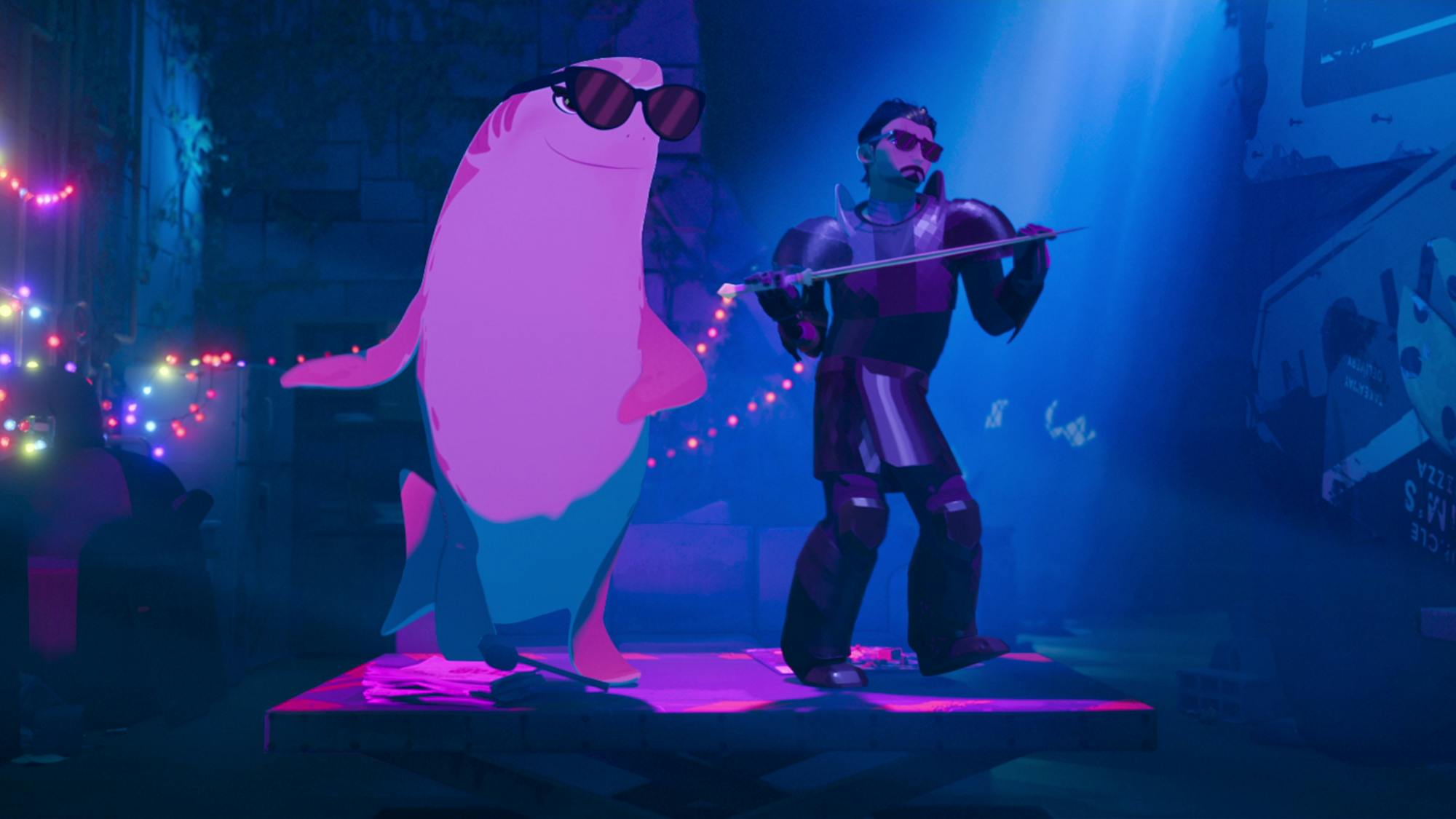
Nimona (Chloë Grace Moretz) as a shark and Ballister Boldheart (Riz Ahmed)
Stevenson, who came out publicly in 2022 after spending three years transitioning to be “socially-male-ish-kind-of-sometimes-whatever,” says that it took time for him to become comfortable with his identity partly due to the culture of fear and misunderstanding around trans issues. “Much the same [as] in the movie that you have all these signs of ‘kill the monster,’ ‘slay the monster,’ ‘be a hero,’ you are basically stewing in this messaging that says that men are this and women are this, and there’s nothing in between,” Stevenson says. “You are one or the other, and you have to be that thing.”
Nimona, however, offers a different and far more hopeful message: acceptance without the need for understanding and an appreciation of the beauty of every form of gender expression and identity. “What I really love about Nimona is that she isn’t someone that can be understood,” says Stevenson. “There is no final answer to who she is; she has to be accepted as an enigma. She has to be accepted as someone whose true form is shapeshifting. [This story is about teaching]people to accept those for what they are, even when that is something we don’t understand.”
All interviews included in this piece were completed prior to July 14, 2023.
